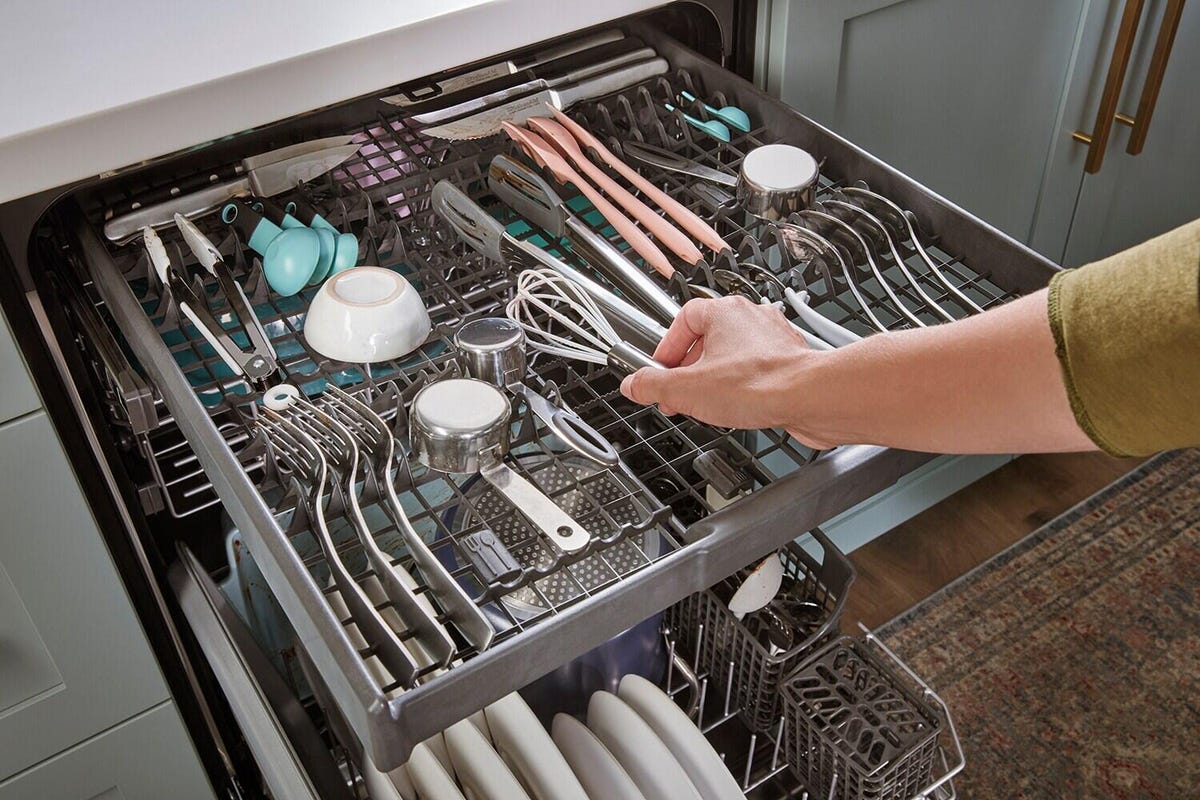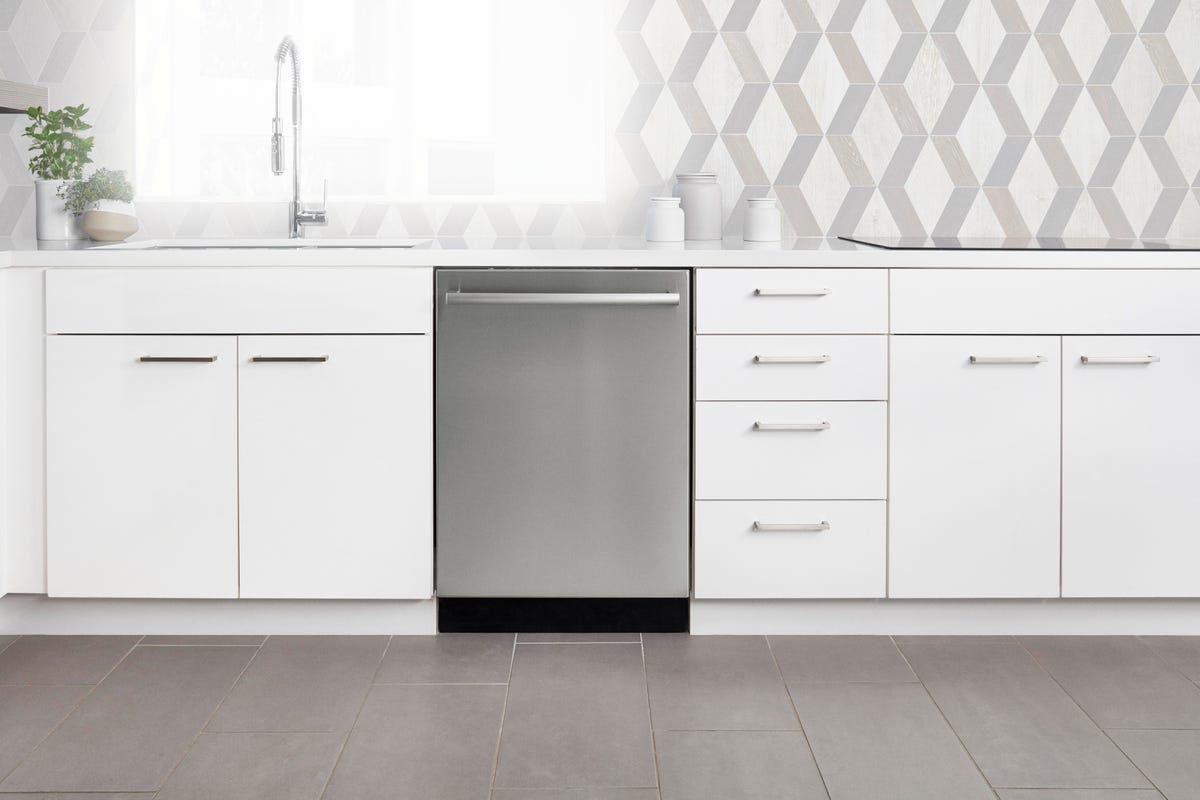Dishwasher Size
The size of your dishwasher is the first decision you'll make, as not all kitchens have the space to accommodate a full-sized model. Most standard models are 24 inches wide and about 35 inches tall and kitchens are usually designed to house a model of these dimensions, but thinner dishwashers exist to accommodate smaller spaces.
A standard dishwasher is 24 x 35 inches in size, but there are compact, custom models for smaller spaces.
Dishwasher style
Most dishwashers are available in stainless steel, which suits most kitchen motifs. Many models are also available in white, black and other finishes. You won't find tons of color options, but Samsung offers a tailored line which includes exclusive finishes such as marine steel and brownish Tuscan steel.

Samsung has a range of great appliances tailored to add some color to your kitchen.
More expensive models, including Bosch and KitchenAid, tend to have sleek, minimalist front doors and a flashier interior design. More budget-friendly brands, like Whirlpool and Maytag, have a more traditional aesthetic, in general.
Dishwasher racks and rack positioning
This is an easily overlooked feature, but it has a significant impact on daily dishwashing. A new trend is the small flat third rack at the top, which can accommodate extra cutlery, kitchen utensils and other smaller items. They are typically added to a vertical cutlery holder housed in the bottom rack. If you fill or overfill a standard cutlery holder regularly, this feature will allow you to wash everything and keep things clean and tidy.

The modern third rack provides another place to place cutlery, kitchen utensils and other small items.
Many dishwashers also have adjustable racks to accommodate odd-sized or unusually large dishes and pans. If you've ever had trouble loading large items into your dishwasher, consider a model with adjustable shelves.
Various Dishwasher Cycles and Features: Are They Important?
There are dishwasher cycles that are standard on almost every model—normal, quick wash, heavy-duty, delicate—but higher-end units will have even more specific cycles, like a mineral-assist wash and prewash cycle. It might be nice to have those extra cycles, but I wouldn't weigh them too heavily when making a purchasing decision. Ultimately, you will use standard cycles a lot more than niche ones.
Here's a quick guide to dishwasher cycles and when to use them.

Don't let yourself be consumed by the various cycles. You'll probably only use two or three.
Drying cycles: Condensation versus electric drying
Most dishwashers have one of two ways to dry dishes after washing. Many use a condensing process where the dishwasher uses very hot water to heat the dishes inside at the end. Then, as the tub cools with the hot dishes, condensation will occur and water will run off the dishes.
Other dishwashers, including some KitchenAid models, have an electric heating element to heat the air and dry dishes at the end. This may be a more thorough way to dry dishes, but it is also less hygienic, less energy efficient and will melt plastic items on the bottom shelf because they are too close to the heating element.
Dishwasher noise level
While dishwashers generally have more in common than differences, noise level is one area where they vary and can affect your overall satisfaction with a specific unit. Most modern dishwashers are quite quiet, only reaching 40 or 50 decibels. But some, like the Kitchenaid KDFE204KPS, have advanced technology to keep the machine as quiet as 39 decibels during operation. If you look at the specifications section of each model, this information should be listed clearly.





